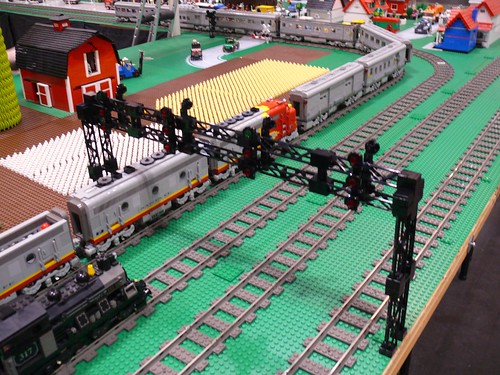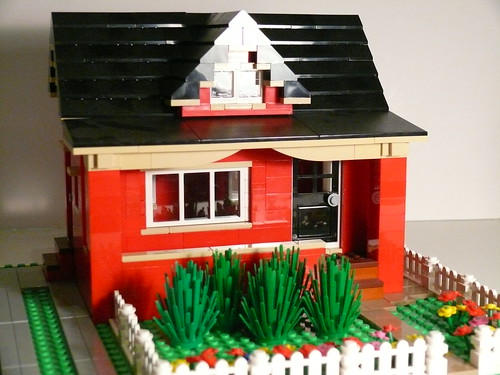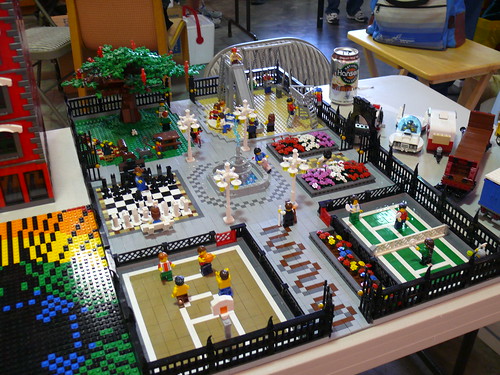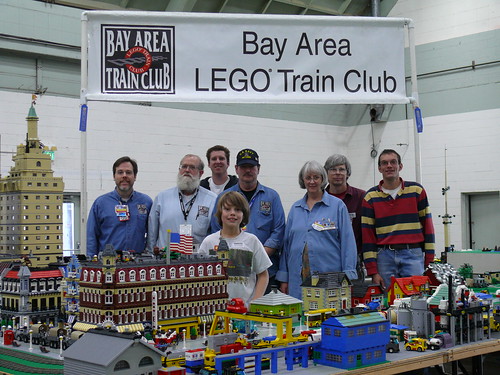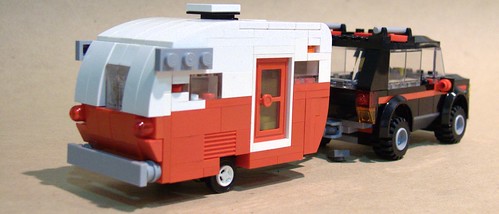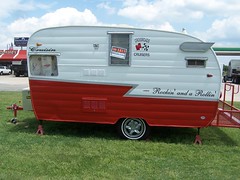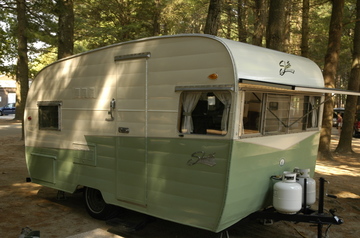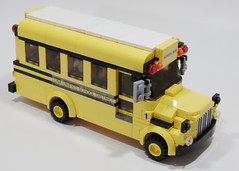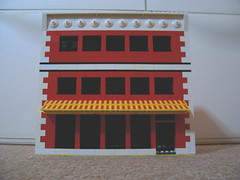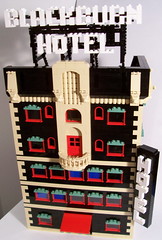A signal gantry I built over four tracks at Bay Area LEGO Train Club exhibit at the Train Collectors’ Association Cal-Stewart Spring Meet, Santa Clara, California, March 2-4, 2012. I built it Friday night after we finished the setup when I realized we would have a four track line without much decoration in that area.
The signals over each track are based on the Union Pacific Signal Rules. Over each track there is a signal facing each direction, and each signal has three lights which could be red or green. I set up the signals with two each track marked “Clear” in one direction (top light green, two lights below red), and “Stop” in the other direction (all three lights red), in keeping with the direction of travel we used on the layout, but after I set all that up, someone put trains on running in the opposite direction (as shown in the photo below)!

